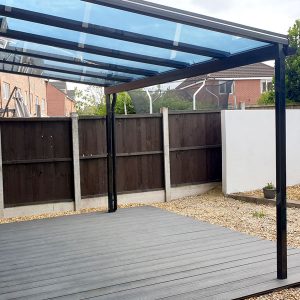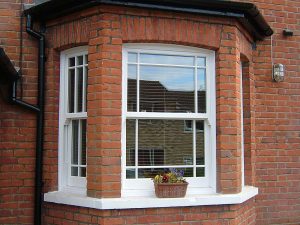White vinegar offers a natural, effective, and affordable solution for cleaning many household surfaces, including uPVC (unplasticized polyvinyl chloride). uPVC materials, often found in windows, doors, and frames, require regular cleaning to maintain their appearance and function. Using white vinegar can help remove grime, stains, and even mold without harsh chemicals. Here’s everything you need to know about using white vinegar to clean uPVC.
1. Why Use White Vinegar for Cleaning uPVC?
Natural Cleaning Power
White vinegar contains acetic acid, a mild acid that cuts through dirt, grease, and bacteria. Unlike strong chemical cleaners, vinegar’s mild acidity effectively cleans uPVC without damaging its surface. Many people prefer white vinegar because it provides a natural cleaning solution, which reduces exposure to toxic ingredients and fumes often found in commercial cleaning products.
Cost-Effective and Environmentally Friendly
White vinegar costs significantly less than most commercial cleaners, making it a budget-friendly choice for home maintenance. Additionally, vinegar doesn’t harm the environment, as it’s biodegradable and free from synthetic chemicals. For those looking to reduce their environmental impact, white vinegar serves as an ideal, eco-friendly alternative for cleaning uPVC.
2. How to Clean uPVC with White Vinegar
Step 1: Prepare the Cleaning Solution
To create an effective uPVC cleaner, mix equal parts white vinegar and warm water in a spray bottle. The warm water helps loosen dirt and makes cleaning easier. For more stubborn stains, you can increase the vinegar concentration slightly, but avoid using undiluted vinegar, as it may leave a strong odor or feel too harsh on certain surfaces.
Step 2: Apply the Solution
Spray the vinegar solution generously onto the uPVC surface, covering areas with visible dirt or stains. For window frames or doors, focus on corners, edges, and other spots where grime accumulates. Allow the solution to sit for a few minutes, letting the vinegar break down any built-up dirt or residue.
Step 3: Wipe Clean with a Soft Cloth
Use a soft, non-abrasive cloth or sponge to wipe the uPVC surface. Gently scrub the area in circular motions to lift away dirt without scratching the material. For tougher stains or areas with more buildup, consider using a soft-bristle brush. Repeat spraying and wiping if necessary to ensure thorough cleaning.
Step 4: Rinse and Dry
After wiping down the surface, rinse the uPVC with a damp cloth to remove any leftover vinegar solution. Dry the area with a clean, dry cloth to prevent streaking or water spots. By drying the uPVC, you also help maintain its shine and protect against water-related marks.
3. What Can White Vinegar Clean on uPVC?
Stains and Discolouration
White vinegar works well on stains and discolouration that can build up over time on uPVC surfaces. From dirt to pollution particles, everyday exposure to the elements can dull the bright appearance of uPVC. Vinegar helps restore its clean look without bleaching or stripping the material, especially effective on white or light-coloured uPVC.
Mold and Mildew
uPVC often develops mould or mildew in damp or humid areas, such as around windows or door frames. White vinegar’s acidic properties help remove and inhibit mold growth. When you apply the vinegar solution to affected areas, it breaks down the mould spores, reducing recurrence. For persistent mould spots, you may need a few applications, but vinegar remains a safer alternative to chemical mould removers.
Grease and Grime
In kitchens or other high-use areas, uPVC can gather greasy fingerprints and grime. White vinegar cuts through greasy residues effectively, making it an ideal cleaner for uPVC doors and frames exposed to cooking or handling. With just a light application, you can restore the surface to its original, clean state.
4. Tips for Using White Vinegar on uPVC
Avoid Over-Saturating
While vinegar cleans effectively, avoid over-saturating the uPVC surface, as excess moisture can lead to streaks or water spots. Spray just enough solution to cover the surface, allowing it to work without dripping or pooling. If you’re cleaning in humid conditions, wipe the area promptly to prevent any residue from drying unevenly.
Avoid Abrasive Scrubbing Tools
Use soft cloths or sponges when cleaning uPVC with vinegar, as abrasive materials like steel wool or rough scrubbers can scratch or dull the surface. By sticking to non-abrasive tools, you preserve the uPVC’s finish and prevent unnecessary wear.
Test on a Small Area First
If you’re concerned about the effect of vinegar on your uPVC, especially coloured uPVC, test a small, inconspicuous area first. Although vinegar is mild, testing ensures it won’t affect the material’s colour or finish. After waiting a few minutes, check the test spot for any changes before cleaning the entire surface.
Avoid Mixing with Bleach or Other Cleaners
Never mix white vinegar with bleach or other chemical cleaners, as the combination can create harmful fumes. Stick to the vinegar-and-water solution or other single-purpose cleaners for different needs. Mixing vinegar with water alone provides safe, effective cleaning without causing harmful reactions.
5. When Should You Avoid Using Vinegar on uPVC?
Highly Polished or Specialised Finishes
Some uPVC surfaces come with specialised coatings or finishes that may not react well to acidic cleaners. Highly polished or glossy uPVC, for instance, could show streaks or lose its lustre when exposed to vinegar. In these cases, consult the manufacturer’s cleaning recommendations or choose a cleaner designed for such finishes.
Heavy Mineral Deposits or Rust Stains
While vinegar handles general grime well, it may not fully remove heavy mineral deposits, such as limescale, or rust stains on uPVC. For these tougher residues, consider a cleaner specifically designed for mineral buildup or rust, or use a specialised product on those spots only.
Conclusion: Should You Use White Vinegar to Clean uPVC?
White vinegar offers an effective, affordable, and eco-friendly way to clean uPVC surfaces. It removes dirt, stains, grease, and even mould, keeping uPVC doors, windows, and frames looking their best. With the right application technique and a simple vinegar-and-water solution, you can achieve excellent results while avoiding harsh chemicals. For many homeowners, white vinegar serves as a practical and sustainable choice for keeping uPVC surfaces clean and bright.












